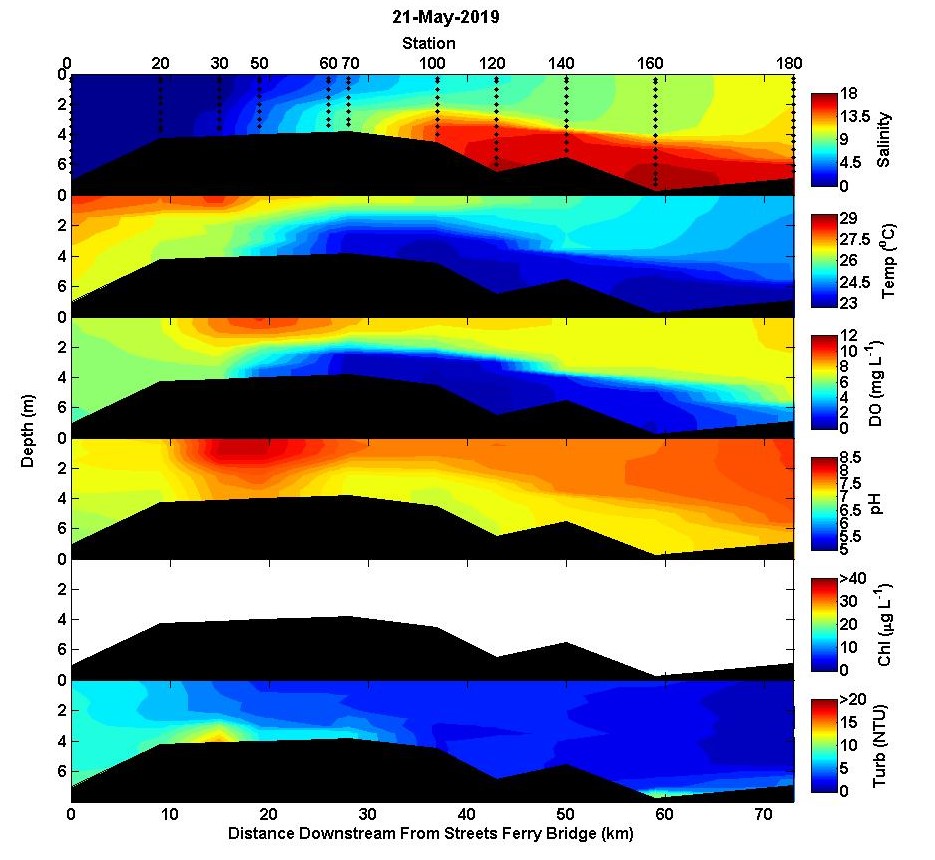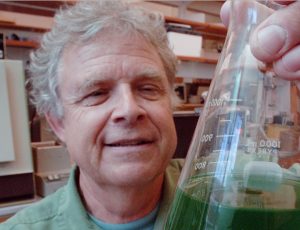Hi all,
A couple of weeks without rain and the estuary is looking almost normal. The salt wedge is at New Bern and surface water salinity near the mouth was about 10. Most of the estuary was strongly stratified and bottom waters were hypoxic from stations 60 to 160. There was a peak in DO at station 50 that was likely due to high phytoplankton production. Microscopic observation of the station 50 surface sample showed a high concentration of small (3-5 um) centric diatoms. Chlorophyll data are not shown due to a failed probe. During the previous trip on 7 May, the chlorophyll probe of the YSI data sonde started to malfunction but the malfunction was not noticed until this trip on 21 May 2019. The bloom level chlorophyll a concentrations observed at station 50 on 7 were an artifact of this malfunction. The probe has been replaced and in vivo chlorophyll a data from both dates have been flagged in the data set.
A fish kill was observed a few days following this trip on 21 May, but no dead fish were noticed during a boat run from New Bern to station 100 on yesterday, 28 May. Based on the reports that I saw, the dead fish were mostly menhaden and had sores consistent with ulcerative mycosis caused by Aphanomyces invadans. This fungus is most virulent when salinities are low and temperatures are in the low to mid 20’s C; conditions observed during the fish kill. Fish that are already stressed, e.g. due to hypoxia, are more likely to suffer from the infection. I’ve attached a couple good papers for those interested.
Best,
Nathan

